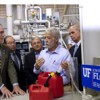 Ethanol can be derived from sugar-based, corn-based, and cellulose-based materials. Production of ethanol from sugar and corn is often viewed as competing with food production and increasing prices of food and fuel. But using non-edible cellulose-based biomass to produce ethanol minimizes competition with the food industry. This 4-page fact sheet provides a general overview of the production process for manufacturing ethanol from cellulosic biomass, including its constituents, conversion processes, and final products. Written by Zhaohui Tong, Pratap Pullammanappallil, and Arthur A. Teixeira, and published by the UF Department of Agricultural and Biological Engineering, November 2012.
Ethanol can be derived from sugar-based, corn-based, and cellulose-based materials. Production of ethanol from sugar and corn is often viewed as competing with food production and increasing prices of food and fuel. But using non-edible cellulose-based biomass to produce ethanol minimizes competition with the food industry. This 4-page fact sheet provides a general overview of the production process for manufacturing ethanol from cellulosic biomass, including its constituents, conversion processes, and final products. Written by Zhaohui Tong, Pratap Pullammanappallil, and Arthur A. Teixeira, and published by the UF Department of Agricultural and Biological Engineering, November 2012.
http://edis.ifas.ufl.edu/ae493
Author: dihagan
Alimentos funcionales (FSHN1217S/FS213)
 Un alimento funcional es definido comúnmente como un alimento que proveen beneficios más allá de la nutrición básica proporcionada por dicho alimento. El beneficio adicional se debe a un componente en el alimento que ofrece beneficios físicos o biológicos, como por ejemplo, beneficios funcionales. This 4-page fact sheet was written by Amanda Ford y Wendy J. Dahl, and published by the UF Department of Food Science and Human Nutrition, November 2012.
Un alimento funcional es definido comúnmente como un alimento que proveen beneficios más allá de la nutrición básica proporcionada por dicho alimento. El beneficio adicional se debe a un componente en el alimento que ofrece beneficios físicos o biológicos, como por ejemplo, beneficios funcionales. This 4-page fact sheet was written by Amanda Ford y Wendy J. Dahl, and published by the UF Department of Food Science and Human Nutrition, November 2012.
http://edis.ifas.ufl.edu/fs213
Functional Foods (FSHN1217/FS210)
 A functional food is commonly defined as a food that provides benefits beyond the basic nutrition provided by that food. The additional benefit is due to a component in the food item that offers physical or biological benefits. As functional foods become increasingly popular in the U.S., it is important to be an informed shopper. This 3-page fact sheet was written by Amanda L. Ford and Wendy J. Dahl, and published by the UF Department of Food Science and Human Nutrition, November 2012.
A functional food is commonly defined as a food that provides benefits beyond the basic nutrition provided by that food. The additional benefit is due to a component in the food item that offers physical or biological benefits. As functional foods become increasingly popular in the U.S., it is important to be an informed shopper. This 3-page fact sheet was written by Amanda L. Ford and Wendy J. Dahl, and published by the UF Department of Food Science and Human Nutrition, November 2012.
http://edis.ifas.ufl.edu/fs210
2012 Cost Estimates of Establishing and Producing Papaya (Carica papaya) in South Florida (FE918)
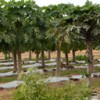 With the recent spike in papaya prices due to phytosanitary restrictions on papayas from Mexico, many growers in South Florida are considering getting back into papaya production to target the ripe papaya market. Still, there are a lot of concerns as to whether the crop can be profitable in light of declining yields. Based on this discussion, the objective of this article is to provide needed information on the costs and returns associated with establishing and operating a five-acre papaya orchard in South Florida, and to assess the prices and yields that must be obtained to make a papaya orchard profitable. This 5-page fact sheet was written by Edward A. Evans, Fredy H. Ballen, and Jonathan H. Crane, and published by the UF Department of Food and Resource Economics, December 2012.
With the recent spike in papaya prices due to phytosanitary restrictions on papayas from Mexico, many growers in South Florida are considering getting back into papaya production to target the ripe papaya market. Still, there are a lot of concerns as to whether the crop can be profitable in light of declining yields. Based on this discussion, the objective of this article is to provide needed information on the costs and returns associated with establishing and operating a five-acre papaya orchard in South Florida, and to assess the prices and yields that must be obtained to make a papaya orchard profitable. This 5-page fact sheet was written by Edward A. Evans, Fredy H. Ballen, and Jonathan H. Crane, and published by the UF Department of Food and Resource Economics, December 2012.
http://edis.ifas.ufl.edu/fe918
Spoon Test for Pureed Food (FSHN1211/FS204)
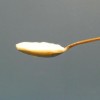 Puréed foods prepared for people with swallowing problems should meet the recommended textural guidelines. Proper texture is the priority when creating purées. A puréed food should have a uniform texture that is “spoon thick” and does not require chewing. It should not be too dry, sticky, lumpy, or thin. Adjustments in thickness may be made according to the individual’s specific needs. This 2-page fact sheet was written by Wendy J. Dahl and Jamila R. Frazier, and published by the UF Department of Food Science and Human Nutrition, November 2012.
Puréed foods prepared for people with swallowing problems should meet the recommended textural guidelines. Proper texture is the priority when creating purées. A puréed food should have a uniform texture that is “spoon thick” and does not require chewing. It should not be too dry, sticky, lumpy, or thin. Adjustments in thickness may be made according to the individual’s specific needs. This 2-page fact sheet was written by Wendy J. Dahl and Jamila R. Frazier, and published by the UF Department of Food Science and Human Nutrition, November 2012.
http://edis.ifas.ufl.edu/fs204
Food Safety within the Household (FSHN12-10/FS195)
 Although food safety education is well established, people still become infected with foodborne illnesses by practicing unsafe behaviors in their kitchen. People who know the basics of home food safety may not always put theory into practice. Consumers must learn more about how food becomes unsafe to eat and modify their current beliefs and behaviors. This 5-page fact sheet was written by Lucianna Grasso, George L. Baker, Renée M. Goodrich-Schneider, and Keith R. Schneider, and published by the UF Department of Food Science and Human Nutrition, October 2012.
Although food safety education is well established, people still become infected with foodborne illnesses by practicing unsafe behaviors in their kitchen. People who know the basics of home food safety may not always put theory into practice. Consumers must learn more about how food becomes unsafe to eat and modify their current beliefs and behaviors. This 5-page fact sheet was written by Lucianna Grasso, George L. Baker, Renée M. Goodrich-Schneider, and Keith R. Schneider, and published by the UF Department of Food Science and Human Nutrition, October 2012.
http://edis.ifas.ufl.edu/fs195
Pesticide Options for Important Insect, Mite, and Mollusk Pests of Commercial Flowers in Florida (ENY695/IG162)
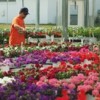 Effective arthropod pest management in commercial floral crops requires that pests be detected in a timely manner through systematic scouting and that appropriate control measures be applied as conditions warrant. Control measures may include economical combinations of cultural controls, physical controls, biological controls, and chemical controls. This 9-page guide is a summary of chemical control measures that are presently available to commercial flower producers in Florida and includes beneficial nematode and microbial insecticides that also are components of biological control. Written by James F. Price and Curtis Nagle, and published by the UF Department of Entomology and Nematology, November 2012.
Effective arthropod pest management in commercial floral crops requires that pests be detected in a timely manner through systematic scouting and that appropriate control measures be applied as conditions warrant. Control measures may include economical combinations of cultural controls, physical controls, biological controls, and chemical controls. This 9-page guide is a summary of chemical control measures that are presently available to commercial flower producers in Florida and includes beneficial nematode and microbial insecticides that also are components of biological control. Written by James F. Price and Curtis Nagle, and published by the UF Department of Entomology and Nematology, November 2012.
http://edis.ifas.ufl.edu/ig162
Understanding and Applying Chelated Fertilizers Effectively Based on Soil pH (HS1208)
 Plant nutrients are one of the environmental factors essential for crop growth and development. Nutrient management is crucial for optimal productivity in commercial crop production. Those nutrients in concentrations of ≤ 100 parts per million (ppm) in plant tissues are described as micronutrients and include iron (Fe), zinc (Zn), manganese (Mn), copper (Cu), boron (B), chlorine (Cl), molybdenum (Mo), and nickel (Ni). Micronutrients such as Fe, Mn, Zn, and Cu are easily oxidized or precipitated in soil, and their utilization is, therefore, not very efficient. Chelated fertilizers have been developed to increase micronutrient utilization efficiency. This 5-page fact sheet provides an overview of chelated fertilizers and considerations for their use to county Extension faculty, growers, and students who are interested in commercial crop production. Written by Guodong Liu, Edward Hanlon, and Yuncong Li, and published by the UF Department of Horticultural Sciences, November 2012.
Plant nutrients are one of the environmental factors essential for crop growth and development. Nutrient management is crucial for optimal productivity in commercial crop production. Those nutrients in concentrations of ≤ 100 parts per million (ppm) in plant tissues are described as micronutrients and include iron (Fe), zinc (Zn), manganese (Mn), copper (Cu), boron (B), chlorine (Cl), molybdenum (Mo), and nickel (Ni). Micronutrients such as Fe, Mn, Zn, and Cu are easily oxidized or precipitated in soil, and their utilization is, therefore, not very efficient. Chelated fertilizers have been developed to increase micronutrient utilization efficiency. This 5-page fact sheet provides an overview of chelated fertilizers and considerations for their use to county Extension faculty, growers, and students who are interested in commercial crop production. Written by Guodong Liu, Edward Hanlon, and Yuncong Li, and published by the UF Department of Horticultural Sciences, November 2012.
http://edis.ifas.ufl.edu/hs1208
Rootstocks for Florida Stone Fruit (HS1110/HS366)
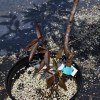 Rootstocks have been used in many tree fruit systems to provide growth advantages or pest or disease resistance without affecting productivity and fruit quality. In Florida, stone fruit are grown on rootstocks that specifically provide pest resistance to the peach root-knot nematode. Although several root-knot nematode-resistant rootstocks are available for stone fruit grown in other locations and climates, ‘Flordaguard’ peach rootstock is currently recommended for stone fruit production in Florida. This 5-page fact sheet was written by M. Olmstead, J. Chaparro, and J. Ferguson, and published by the UF Department of Horticultural Sciences, November 2012.
Rootstocks have been used in many tree fruit systems to provide growth advantages or pest or disease resistance without affecting productivity and fruit quality. In Florida, stone fruit are grown on rootstocks that specifically provide pest resistance to the peach root-knot nematode. Although several root-knot nematode-resistant rootstocks are available for stone fruit grown in other locations and climates, ‘Flordaguard’ peach rootstock is currently recommended for stone fruit production in Florida. This 5-page fact sheet was written by M. Olmstead, J. Chaparro, and J. Ferguson, and published by the UF Department of Horticultural Sciences, November 2012.
http://edis.ifas.ufl.edu/hs366
Green lacewings (of Florida) Neuroptera: Chrysopidae (EENY534/IN965)
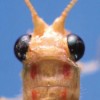 The Chrysopidae are one of the largest and economically most important families of the Neuroptera. There are about 1,300 currently recognized species included in about 87 genera and three subfamilies (Brooks and Bernard 1990) in the world. In Florida, there are 22 species in 9 genera, all placed in the subfamily Chrysopinae (Penny et al. 1997). The larvae are voracious predators of small, comparatively soft-bodied arthropods such as aphids, scale insects, whiteflies, thrips, insect eggs, and other prey (Muma 1959; Canard et al. 1984). For this reason they are used widely in biological control. The adults are usually predators, but a few species only feed on pollen. This 4-page fact sheet includes Key to the Genera of Green Lacewings of Florida. Written by Lionel A. Stange, and published by the UF Department of Entomology and Nematology, November 2012.
The Chrysopidae are one of the largest and economically most important families of the Neuroptera. There are about 1,300 currently recognized species included in about 87 genera and three subfamilies (Brooks and Bernard 1990) in the world. In Florida, there are 22 species in 9 genera, all placed in the subfamily Chrysopinae (Penny et al. 1997). The larvae are voracious predators of small, comparatively soft-bodied arthropods such as aphids, scale insects, whiteflies, thrips, insect eggs, and other prey (Muma 1959; Canard et al. 1984). For this reason they are used widely in biological control. The adults are usually predators, but a few species only feed on pollen. This 4-page fact sheet includes Key to the Genera of Green Lacewings of Florida. Written by Lionel A. Stange, and published by the UF Department of Entomology and Nematology, November 2012.
http://edis.ifas.ufl.edu/in965
Burrowing Nematode Radopholus similis (Cobb, 1893) Thorne, 1949 (Nematoda: Secernentea: Tylenchida: Pratylenchidae: Pratylenchinae) (EENY542/IN969)
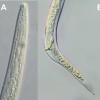 The burrowing nematode is the most economically important nematode parasite of banana in the world. Infection causes toppling disease of banana, yellows disease of pepper and spreading decline of citrus. These diseases are the result of burrowing nematode infection destroying root tissue, leaving plants with little to no support or ability to take up water and translocate nutrients. Because of the damage that it causes to citrus, ornamentals and other agricultural industries, worldwide, burrowing nematode is one of the most regulated nematode plant pests. This 5-page fact sheet was written by Nicholas Sekora and William T. Crow, and published by the UF Department of Entomology and Nematology, November 2012.
The burrowing nematode is the most economically important nematode parasite of banana in the world. Infection causes toppling disease of banana, yellows disease of pepper and spreading decline of citrus. These diseases are the result of burrowing nematode infection destroying root tissue, leaving plants with little to no support or ability to take up water and translocate nutrients. Because of the damage that it causes to citrus, ornamentals and other agricultural industries, worldwide, burrowing nematode is one of the most regulated nematode plant pests. This 5-page fact sheet was written by Nicholas Sekora and William T. Crow, and published by the UF Department of Entomology and Nematology, November 2012.
http://edis.ifas.ufl.edu/in969
Tropical sod webworm Herpetogramma phaeopteralis Guenee (Insecta: Lepidoptera: Crambidae) (EENY541/IN968)
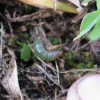 Tropical sod webworm larvae are destructive pests of warm season turfgrasses in the southeastern U.S., especially on newly established sod, lawns, athletic fields, and golf courses. Larval feeding damage reduces turfgrass aesthetics, vigor, photosynthesis and density. The first sign of damage is often caused by differences in grass height in areas where larvae are feeding. This 5-page fact sheet was written by Nastaran Tofangsazie, Steven P. Arthurs, and Ronald Cherry, and published by the UF Department of Entomology and Nematology, November 2012.
Tropical sod webworm larvae are destructive pests of warm season turfgrasses in the southeastern U.S., especially on newly established sod, lawns, athletic fields, and golf courses. Larval feeding damage reduces turfgrass aesthetics, vigor, photosynthesis and density. The first sign of damage is often caused by differences in grass height in areas where larvae are feeding. This 5-page fact sheet was written by Nastaran Tofangsazie, Steven P. Arthurs, and Ronald Cherry, and published by the UF Department of Entomology and Nematology, November 2012.
http://edis.ifas.ufl.edu/in968
Salmonella y Escherichia coli enteropatogena en el ambiente de produccion de cultivos: fuentes potenciales, supervivencia y gestion (SL375Span/SS577)
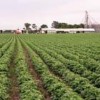 El objetivo de esta publicación EDIS es poner en evidencia los descubrimientos recientes que se enfocan en la ecología de los patógenos humanos en el área de producción de cultivo. Una mejor comprensión de cómo los patógenos persisten fuera de los huéspedes animales en el agua para la agricultura, en el suelo y en las plantas, tendrá grandes impactos en el manejo y procesamiento de los productos mismos, empezando desde el productor y hasta el consumidor. This 3-page fact sheet was written by Massimiliano Marvasi, Max Teplitski, Andrée George, and George Hochmuth, and published by the UF Department of Soil and Water Science, November 2012.
El objetivo de esta publicación EDIS es poner en evidencia los descubrimientos recientes que se enfocan en la ecología de los patógenos humanos en el área de producción de cultivo. Una mejor comprensión de cómo los patógenos persisten fuera de los huéspedes animales en el agua para la agricultura, en el suelo y en las plantas, tendrá grandes impactos en el manejo y procesamiento de los productos mismos, empezando desde el productor y hasta el consumidor. This 3-page fact sheet was written by Massimiliano Marvasi, Max Teplitski, Andrée George, and George Hochmuth, and published by the UF Department of Soil and Water Science, November 2012.
http://edis.ifas.ufl.edu/ss577
Fungicide Resistance Action Committee's (FRAC) Classification Scheme of Fungicides According to Mode of Action (PI94/PI131)
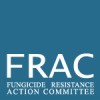 This guide addresses management of pesticide resistance and describes the Fungicide Resistance Action Committee’s (FRAC) classification of fungicides and bactericides registered for agricultural and non-agricultural use in Florida by their modes of action. A cross-reference of common names for active ingredients, along with corresponding examples of their trade names, is also provided. Written by F.M. Fishel and M.M. Dewdney, and published by the UF Department of Agronomy, November 2012.
This guide addresses management of pesticide resistance and describes the Fungicide Resistance Action Committee’s (FRAC) classification of fungicides and bactericides registered for agricultural and non-agricultural use in Florida by their modes of action. A cross-reference of common names for active ingredients, along with corresponding examples of their trade names, is also provided. Written by F.M. Fishel and M.M. Dewdney, and published by the UF Department of Agronomy, November 2012.
http://edis.ifas.ufl.edu/pi131
Designing Educational Programs for Older Adults (FCS2216/FY631)
 This 4-page fact sheet discusses marketing to older adults, location and timing of programs, and how to successfully share information with older adults. Written by Martie Gillen, Carolyn Wilken, and Jenny Jump, and published by the UF Department of Family Youth and Community Sciences, November 2012.
This 4-page fact sheet discusses marketing to older adults, location and timing of programs, and how to successfully share information with older adults. Written by Martie Gillen, Carolyn Wilken, and Jenny Jump, and published by the UF Department of Family Youth and Community Sciences, November 2012.
http://edis.ifas.ufl.edu/fy631
Adapting the Home (FCS2215/FY630)
 This 4-page fact sheet discusses AARP’s 10 basic ideas to increase home safety, how to individualize for each person or activity, how to apply universal design to make homes safer, and assistive devices. Written by Martie Gillen, Pat J. Dasler, and Jenny Jump, and published by the UF Department of Family Youth and Community Sciences, November 2012.
This 4-page fact sheet discusses AARP’s 10 basic ideas to increase home safety, how to individualize for each person or activity, how to apply universal design to make homes safer, and assistive devices. Written by Martie Gillen, Pat J. Dasler, and Jenny Jump, and published by the UF Department of Family Youth and Community Sciences, November 2012.
http://edis.ifas.ufl.edu/fy630
Fall Prevention (FCS2214/FY629)
 Among older adults (those 65 or older), falls are the leading cause of injury and death. When someone falls, they face long-term disability, lower productivity, and loss of independence. Falls can happen anywhere, but more than half of all falls happen at home. Many of these falls could be prevented by making simple changes in the home. This 3-page fact sheet was written by Martie Gillen, Kristen D. Smith, and Jenny Jump, and published by the UF Department of Family Youth and Community Sciences, November 2012.
Among older adults (those 65 or older), falls are the leading cause of injury and death. When someone falls, they face long-term disability, lower productivity, and loss of independence. Falls can happen anywhere, but more than half of all falls happen at home. Many of these falls could be prevented by making simple changes in the home. This 3-page fact sheet was written by Martie Gillen, Kristen D. Smith, and Jenny Jump, and published by the UF Department of Family Youth and Community Sciences, November 2012.
http://edis.ifas.ufl.edu/fy629
Financial Issues (FCS2212/FY627)
 Although we cannot foresee unexpected events, planning can help us control some financial issues that may arise. This 4-page fact sheet highlights the main financial poblems older adults face during retirements, and solutions to help plan and manage a successful retirement. Written by Martie Gillen and Josephine Turner, and published by the UF Department of Family Youth and Community Sciences, November 2012.
Although we cannot foresee unexpected events, planning can help us control some financial issues that may arise. This 4-page fact sheet highlights the main financial poblems older adults face during retirements, and solutions to help plan and manage a successful retirement. Written by Martie Gillen and Josephine Turner, and published by the UF Department of Family Youth and Community Sciences, November 2012.
http://edis.ifas.ufl.edu/fy627
Safe Return (FCS2211/FY626)
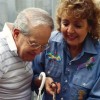 In the United States, more than 10,000 times each year a person with dementia becomes lost in the community and cannot find the way home. The quality of care people receive does not influence the likelihood of people with dementia to become lost. Even people who live in the best caregiving situations can become lost in the community. It can happen to anyone, even if the person does not have a tendency to wander. This 4-page fact sheet looks at why people with dementia become lost, how to prevent this from happening, and identify the best search strategies for finding someone who is lost. Written by Martie Gillen and Meredeth A. Rowe, and published by the UF Department of Family Youth and Community Sciences, November 2012.
In the United States, more than 10,000 times each year a person with dementia becomes lost in the community and cannot find the way home. The quality of care people receive does not influence the likelihood of people with dementia to become lost. Even people who live in the best caregiving situations can become lost in the community. It can happen to anyone, even if the person does not have a tendency to wander. This 4-page fact sheet looks at why people with dementia become lost, how to prevent this from happening, and identify the best search strategies for finding someone who is lost. Written by Martie Gillen and Meredeth A. Rowe, and published by the UF Department of Family Youth and Community Sciences, November 2012.
http://edis.ifas.ufl.edu/fy626
How to Use Deterrents to Stop Damage Caused by Nuisance Wildlife in Your Yard (WEC326/UW371)
 Many of us try to attract particular types of wildlife to our yards so that we can observe them. We often select plants and other materials that we know provide food, cover, and water for those animals we like to watch. However, when unwanted wildlife visit your yard and cause damage, you might need to consider the use of tactics that could deter these unwanted species. This 8-page fact sheet was written by Holly K. Ober and Arlo Kane, and published by the UF Department of Wildlife Ecology and Conservation, October 2012.
Many of us try to attract particular types of wildlife to our yards so that we can observe them. We often select plants and other materials that we know provide food, cover, and water for those animals we like to watch. However, when unwanted wildlife visit your yard and cause damage, you might need to consider the use of tactics that could deter these unwanted species. This 8-page fact sheet was written by Holly K. Ober and Arlo Kane, and published by the UF Department of Wildlife Ecology and Conservation, October 2012.
http://edis.ifas.ufl.edu/uw371